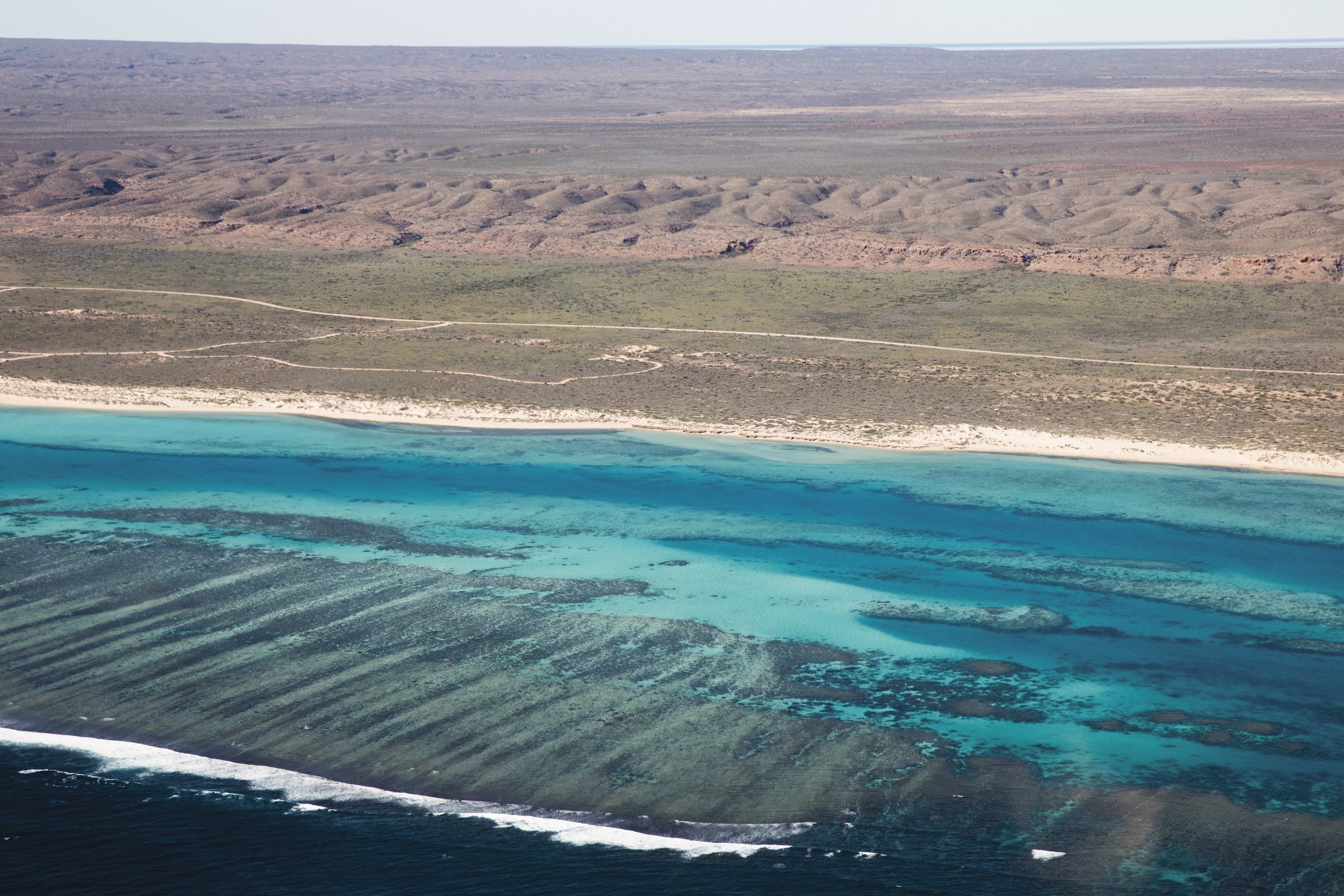Ningaloo Reef – the longest fringing reef in the world.
Ningaloo Reef
At over 300 kilometres long, Ningaloo Reef is also the world’s only large fringing reef located on the western side of a continental landmass. At its point closest to the continent, the reef is just 100 meters from shore; at its farthest point, it is less than 7 kilometres away.
Ningaloo Reef, and the surrounding waters, became Ningaloo Marine Park in 1987. The park is home to sharks, manta rays, dolphins, whales, dugongs, marine turtles, more than 250 coral species, and over 500 tropical fish species. The Ningaloo Marine Park encompasses a variety of interconnected habitats: fringing and patch coral reefs, soft sediment lagoons, mangroves, sea grass beds and coastal dunes.
Extending nearly 300 kilometres north from the Tropic of Capricorn, the reef owes its existence to the occurrence of the warm Leeuwin current, which facilitates the occurrence of tropical species at temperate latitudes.
Ningaloo’s unique habitat is unparalleled in the world and there is no better way to explore it than on board a unique live aboard sailing holiday with Sail Ningaloo.
Ningaloo is famous around the world for whale sharks. It was one of the first places in the world to establish an ecotourism industry based on swimming with these gentle giants, but Ningaloo offers much more wildlife and marine life than just whale sharks!
Ningaloo wildlife – what happens & when does it happen?…
Ningaloo Reef is UNESCO World Heritage Listed
On 6th January 2010, the Commonwealth and Western Australian governments formally nominated the Ningaloo Coast for World Heritage listing. It has also been included in the National Heritage List – Australia’s most prestigious heritage recognition.
On 24th June 2011, UNESCO formally recognised the outstanding biological diversity of the region and listed it as World Heritage, an area of 708,000ha, and includes Cape Range on Exmouth Peninsula, a coastal strip extending about 260km south to Red Bluff, as well as adjacent dune fields, marine areas, reefs and islands has been acknowledged as one of the most outstanding natural places in the world.
The Ningaloo Coast nomination meets four of the ten criteria set out by UNESCO (United Nations Educational, Scientific and Cultural Organization) for World Heritage Listing;
vii) to contain superlative natural phenomena or areas of exceptional natural beauty and aesthetic importance;
viii) to be outstanding examples representing major stages of earth’s history, including the record of life, significant on-going geological processes in the development of landforms, or significant geomorphic or physiographic features;
ix) to be outstanding examples representing significant on-going ecological and biological processes in the evolution and development of terrestrial, fresh water, coastal and marine ecosystems and communities of plants and animals;
x) to contain the most important and significant natural habitats for in-situ conservation of biological diversity, including those containing threatened species of outstanding universal value from the point of view of science or conservation.
Cape Range National Park
The limestone range and arid coastal plains of Cape Range adjoin the pristine waters of Ningaloo Marine Park with spectacular contrasting scenery. Located within the Ningaloo Coast World Heritage Area, Cape Range is a rugged landscape of spectacular canyons, best viewed from the drive into Charles Knife Canyon and Shothole Canyon on the eastern side of the range, or hiking into Mandu Mandu Gorge or Yardie Creek Gorge on the western side.
Cape Range offers a rich and diverse habitat for terrestrial wildlife including kangaroos, emus, echidnas, birds and black-flanked rock wallabies. Reptile species include the Exmouth spiny-tailed gecko, western netted dragon and west coast banded snake.
Under the Cape Range Peninsula lies a complex limestone karst system that is home to a diverse number of unique subterranean fauna. The 535 caves that have been recorded are up to 100m deep and interconnected across 6km!
Commonwealth Ningaloo Marine Park
The Commonwealth Ningaloo Marine Park borders the western edge of the Ningaloo Marine Park. It incorporates a diversity of habitats including the continental slope and shelf, as well as pelagic habitats in the open ocean. The deeper waters are dominated by sponge gardens with soft corals and algae which supports large numbers of fish such as trevally, tuna, mackerel, marlin and sailfish.


